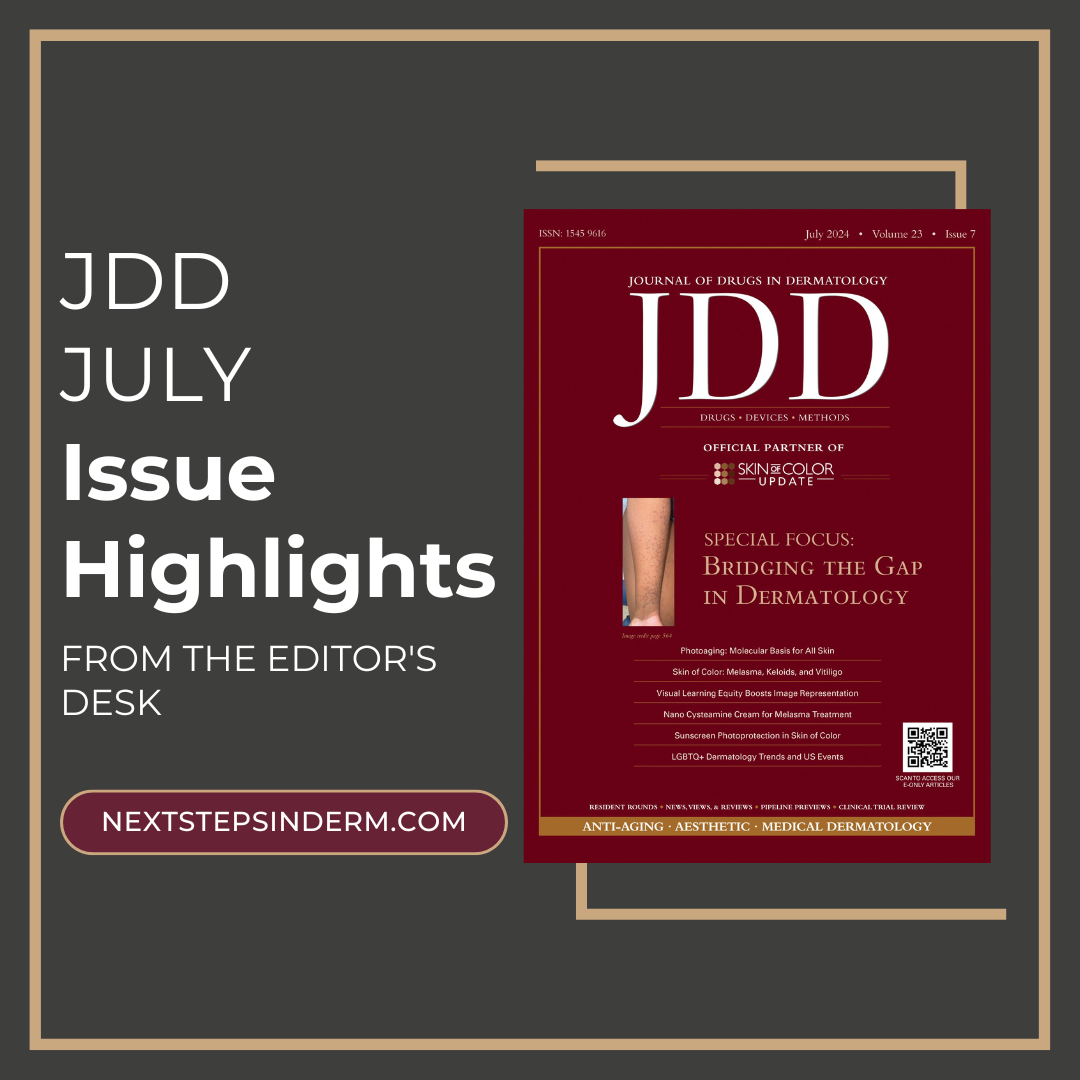This July, the Journal of Drugs in Dermatology (JDD) is proud to present a special edition focused on “Bridging the Gap in Dermatology.” Our Editor’s Picks this month highlight groundbreaking research and discussions aimed at promoting inclusivity, representation, and innovation in dermatologic care. From advancements in sun protection to the role of social media in healthcare, these pieces provide valuable insights into closing gaps in dermatology and enhancing patient outcomes. Dive into this month’s Editor’s Picks and stay informed on the forefront of dermatological research and innovation with JDD!
Effects of a Sheer 100% Mineral Sunscreen Moisturizer on Facial Photodamage Across Fitzpatrick Skin Types finds that a sheer, 100% mineral sunscreen moisturizer SPF 50 significantly improves facial photodamage in females aged 35 to 60 across all Fitzpatrick skin types.
Representation of Skin of Color in Social Media Discussions on Melasma, Keloids, and Vitiligo emphasizes the growing role of social media in healthcare, particularly in disseminating health-related information among individuals with skin of color.
Visual Learning Equity Initiative Enhances Preclinical Dermatologic Image Representation: A Cross-Sectional Study highlights underrepresentation of darker skin tones in the GUSOM curriculum and shows that a student-let initiative significantly increased their representation in dermatologic images, promoting visual learning equity
Updates on the Molecular Basis of Photoaging in All Skin Types presents the mechanisms and biomarkers of photodamage induced by UV, visible light, and infrared, aiming to better prevent and reverse photoaging across all skin types.
A recent study Efficacy, Safety, Satisfaction, and Adherence to Treatment With Nano-Formulated Cysteamine Tranexamic Acid Cream to Treat Melasma demonstrates significant efficacy in reducing mMASI scores, alongside a strong safety profile and high patient satisfaction.
Image Analysis of Xerosis and Atopic Dermatitis Following Prebiotic Skincare Regimen in Ethnically Diverse Patients suggests that this device allows for qualitative and standardized imaging of various skin conditions on multiple skin tones, including images of mild-AD and severe xerosis.
Appearance Dissatisfaction and Body Dysmorphic Disorder in the Dermatology Patient discusses how validated screening questionnaires, such as the Body Dysmorphic Disorder Questionnaire, are valuable tools for dermatologists to quickly identify BDD in patients.
LGBTQ+ Dermatological Trends Linked to United States Societal Events: An Interrupted Time Series Analysis underscores the importance for dermatologists to understand the unique needs of the LGBTQ+ community and provide culturally sensitive care in response to societal changes.
Find more JDD Issue Highlights here.

